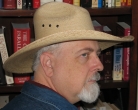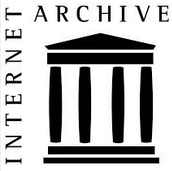From Decisions of Destiny by Richard L. Tobin, The World Publishing Company
It is conceivable that Chester Alan Arthur was not only an accident in the Presidency but literally ineligible for the office. In 1884, the, year Arthur would have been up for re-election had his own party not disowned him, one A. P. Hinman published a tiny booklet in New York attempting to prove that Arthur had not been born in the United States, as was claimed, but in reality came into the world beyond the Canadian border of Vermont. Hinman’s little known book is entitled “How a British Subject Became President of the United States,”15 undeniably a political tract inspired by the forces of James G. Blaine, who would have done (and did) just about anything to seize the presidential nomination.
The Constitution requires that the President and the Vice-President shall be natural born citizens. Article II reads: “No person except a natural born citizen . . . shall be eligible to the office of President,” and the Twelfth Amendment reads: “But no person constitutionally ineligible to the office of President shall be eligible to that of Vice President of the United States.”
The question raised by Hinman at the urging of Blaine or Conkling or Sherman (or any one of a dozen jealous politicians of the time) was whether Arthur, being in their eyes Canadian-born, was legally eligible for the office of Vice-President under Article XII of the Amendments. If he was ineligible for Vice-President he was, under the Constitution, ineligible to succeed Garfield.
Hinman’s book claimed that Arthur, when nominated for the Vice-Presidency, was, at first, unable to name his birthplace. After diligent search, during what was said to be a fishing trip to Canada immediately following his nomination, Arthur found no existing record of his Canadian birth; so he was, in Hinman’s words, “safe in naming some out-of-the-way place in the United States.” He chose Fairfield, Vermont, where a deceased brother had been born.
15. A. P. Hinman, “How a British Subject Became President of the
United States** (New York, 1884), now in the possession of Theodore
Carlson, Wilton, Connecticut.
Vermont Historic Sites – Home of Chester A. Arthur
Some mystery surrounds the early years of Chester A. Arthur. The most frequently asked question is “Where was he born?” The President Arthur State Historic Site is a 1953 recreation of the second house in which Arthur lived as an infant. The confusion stems from the fact that Arthur himself told people that his birthyear was 1830 (it was actually 1829). The building in which he was born was actually a primitive cabin hastily erected in the village of Fairfield. The Baptist Congregation later completed the parsonage where the family moved shortly after the birth of the future president. It was this parsonage which was reconstructed by the State of Vermont.
The granite monument, dedicated in 1903, is situated on a small plot of land presented to the State of Vermont by P.B.B. Northrop. At that time it was believed this was the location of the birthplace of Chester Arthur. In 1950 the State of Vermont purchased the land around the monument and the present building was recreated in 1953 using as a guide an old photograph of the house which stood on this site.
Official White House biography of Arthur
Arthur demonstrated as President that he was above factions within the Republican Party, if indeed not above the party itself. Perhaps in part his reason was the well-kept secret he had known since a year after he succeeded to the Presidency, that he was suffering from a fatal kidney disease. He kept himself in the running for the Presidential nomination in 1884 in order not to appear that he feared defeat, but was not renominated, and died in 1886. Publisher Alexander K. McClure recalled, “No man ever entered the Presidency so profoundly and widely distrusted, and no one ever retired … more generally respected.”




Ted, so the sensible person asks what the Congress, the Supreme Court and the President knows that you don’t know?
[Yes, I know Ted posts the same message all over the Internet.]
Here is something you may find of interest: I notice on another blog that someone claimed Chester Arthur provided a birth certificate when questioned about his place of birth.
I am questioning where that birth certificate came from. Vermont did not require mandatory registration of vital records until 1857. Some towns kept records, and of course you had family bibles, but there were no birth certificates as we commonly know them today.
I found this information while going along looking for my own family history information here: http://www.myvermontgenealogy.com/vt_records.htm
I also found the same information repeated on a couple of other genealogy websites.
Just something of interest.
The Thomas Reeves biography of Arthur does not mention anything about a birth certificate. What is known about the date and place of his birth come from the Arthur family Bible.
A. P. Hinman, in his smear book (available exclusively here on Obama Conspiracy Theories) says he did obtain the birth certificate of one of Arthur’s daughters.
I assume that the claim on the other blog is spurious.